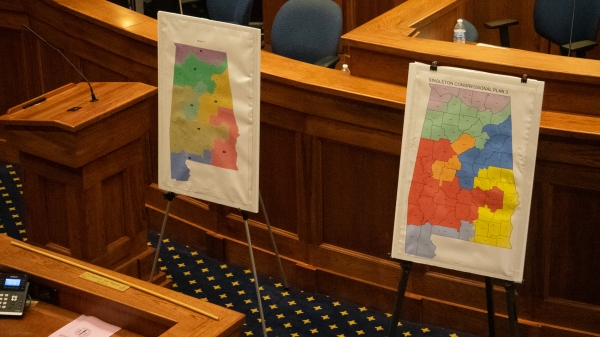The question in Alabama’s Congressional redistricting fight is no longer whether a court will decide the new map for the state, but when?
The state can expect the court to “rule shortly,” according to U.S. Circuit Judge Stanley Marcus.
Plaintiffs, the state and other interested parties were on hand in Birmingham Tuesday to debate on which of the three maps proposed by special master Richard Allen will be best for the state moving forward.
In the eyes of the state, none of the three maps are acceptable as they continue to claim the court has allowed a racial gerrymander to occur despite the U.S. Supreme Court soundly rejecting its appeal.Out of the three maps, the state said it is most opposed to “Plan 1” which closely resembles the VRA Plan proposed by the Milligan Plaintiffs and is the only map that creates two majority-minority districts.
Whatever map the court passes, Solicitor General Edmund LaCour asked the court to “choose it quickly.”
The state wasn’t alone in objecting to all maps; the Alabama Democratic Conference also objected to all maps, arguing that it could allow for a “white voter veto” in the proposed districts.

The three congressional maps proposed by the special master in the case Allen v. Milligan. The first would result in a second majority Black congressional district in Alabama.
U.S. Circuit Judge Anna Manasco told ADC counsel that the court “isn’t at liberty to participate in a social science experiment.”
The Milligan plaintiffs made it clear they prefer Plan 1, and specifically object to Plan 2 as they said it would make it harder for Black voters to elect a candidate of their choice.
Deuel Ross, attorney for the Milligan plaintiffs, said Plan 1 most closely preserves communities of interest.
“There’s never been two Black congressional districts and two Black members of Congress elected from Alabama (at the same time), and so our hope is that with this remedial plan that we finally have the representation that our clients are entitled to,” Ross told press.
Abha Khanna, attorney for the Caster plaintiffs, said they have no preference between Plan 1 and Plan 3, but also objected to Plan 2.
“Perhaps Remedial Plan 3 is drawing the best consensus,” Khanna said.
The court also appeared to be concerned with making the least amount of change to the state’s 2023 map as it considers the limitations of its role in drawing district maps.
Judges seemed to focus often on the number of county splits—remedial plans 2 and 3 split only six counties, in the same line as the state’s 2023 plan. Remedial Plan 1 would split seven counties, potentially putting it at a disadvantage if the judges apply more weight to that disruption of the Legislature’s plan.
However, there are other factors to consider in similarity to the state’s plan, including preserving the cores of districts and keeping communities of interest intact.























































